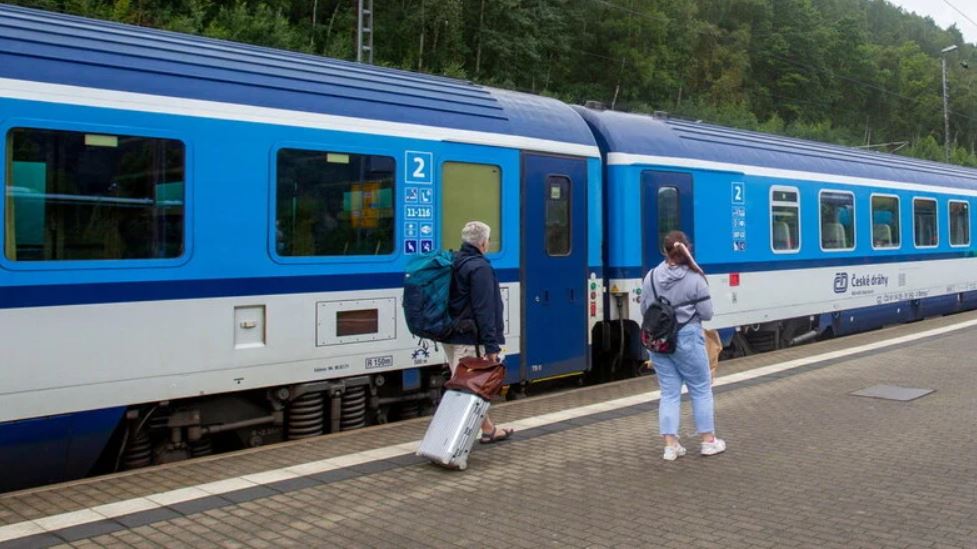Von Michael Rothe
Dresden. Die Würfel sind gefallen: Die Deutsche Bahn spricht sich bei der geplanten Neubaustrecke Dresden-Prag für einen durchgängigen Tunnel durch das Erzgebirge aus. Diese Entscheidung gab der Projektverantwortliche Kay Müller am Montagnachmittag in Heidenau bekannt – fast ein halbes Jahr früher als geplant.
Nach den Ergebnissen der Vorplanung liefere ein rund 30 Kilometer langer Tunnel zwischen Heidenau und dem tschechischen Verkehrsknoten Ústí nad Labem (Außig) die für die Region bestmögliche Streckenführung, so der Bahnmanager bei Präsentation der Vorzugsvariante. Es wäre Deutschlands längster Eisenbahntunnel. Vor einem Jahr hatte die Bahn die möglichen Trassenführungen zwischen Heidenau und Ústí nad Labem von ursprünglich zehn auf zwei Routen eingedampft.
Im Tunnel nach Prag

Die nun fallengelassene, teils oberirdische Route sah einen 2,5 Kilometer langen Tunnel ab Heidenau und einen etwa 27 Kilometer langen grenzüberschreitenden Tunnel durch das Erzgebirge vor. Eine Brücke über das Seidewitztal sollte die beiden Bauwerke miteinander verbinden. Die Volltunnelvariante startet auch in Heidenau und verläuft über gut 30 Kilometern nach Tschechien. Sie ist „sowohl für die Umwelt als auch verkehrlich, technisch und wirtschaftlich die beste Lösung“, heißt es nun.
Martin Walden, Konzernbevollmächtigter der DB für Sachsen, Sachsen-Anhalt und Thüringen, spricht von einem „intensiven und vertrauensvollen Dialog mit allen Beteiligten und den Bürgerinnen und Bürgern“. So sei die Variante stetig optimiert worden. Die Dohmaer Bürgerinitiative „Basistunnel nach Prag“, die selbst vier Trassenvarianten eingebracht hatte, spricht hingegen von „Scheinbeteiligung“. Sie hatte mehr als 37.000 Einwände gegen die teiloffene Strecke gesammelt – mit Erfolg. Die Bahn betont, dass verschiedenste Interessen zu berücksichtigen seien. Fahrgastverband, Umweltschützer und Kommunen hätten die gleichen Rechte wie die Bürgerinitiative. Mit großem Aufwand sei auch die Volltunnelvariante weiter verfolgt worden. Sie hat sich letztlich durchgesetzt.
Martin Dulig (SPD), Sachsens Wirtschafts- und Verkehrsminister, betont den hohen Stellenwert der Verbindung für ganz Europa. Auch wegen der Förderung durch die EU sei eine Beschleunigung des Vorhabens wünschenswert. „Daher benötigt die Trasse absolute Priorität“, so Dulig. Sie steht laut EU-Projektkoordinator Mathieu Grosch auch in Brüssel „ganz oben“ – als Teil des Kernkorridors Orient/East-Med. Er verbindet Skandinavien über die Häfen an Nord- und Ostsee mit Schwarzem und Mittelmeer, auf 2.820 Kilometern elf Staaten.
Neubau soll das flutgefährdete Elbtal entlasten
Der insgesamt rund 43 Kilometer lange Neubau soll das flutgefährdete Elbtal entlasten, Anwohner dort vom Lärm der täglich bis zu 240 Züge befreien und die Fahrzeit Dresden–Prag von 2:15 auf eine Stunde mehr als halbieren – dank Geschwindigkeiten von 200 km/h auf deutscher und bis zu 320 km/h auf tschechischer Seite. Güterzüge sind dann mit 120 km/h unterwegs.

© Marko Förster
Zum Neubau des Tunnels gehört auch der Ausbau der Strecke zwischen Dresden und Heidenau. Damit der Zugverkehr reibungslos durch den neuen Tunnel fahren kann, müssen etwa 46 Kilometer Gleise, rund 90 Weichen, moderne Leit- und Sicherungstechnik sowie Abstellmöglichkeiten für Züge neu gebaut werden.
Im Januar 2024 beginnen laut Bahn die Bürgerdialoge in den Gemeinden. Dort könne man sich über die Planung informieren und auch Hinweise geben. Mitte 2024 solle die Vorzugsvariante dann endgültig feststehen. Dann reiche die DB die Unterlagen im Bundestag ein. Das Parlament entscheide voraussichtlich noch in der aktuellen Legislaturperiode über Umsetzung und Finanzierung.
Die Bahn geht nach der Planungsphase von zehn bis 13 Jahren Bauzeit aus. Wenn alles gut laufe, könnten Anfang der 2040er-Jahre die ersten Züge rollen.








